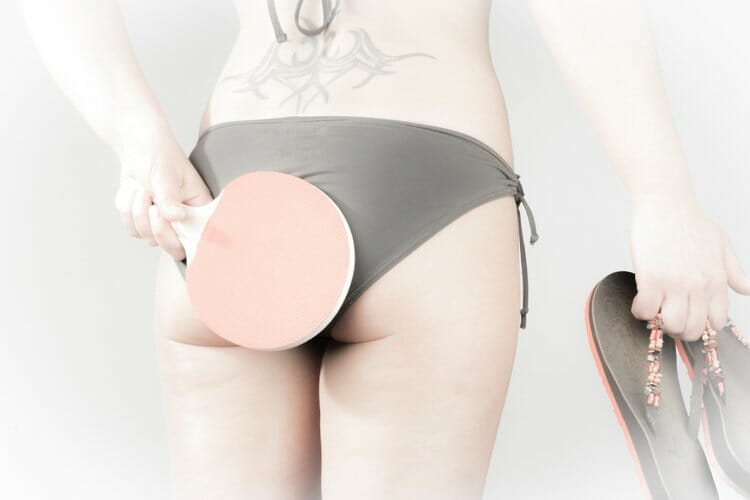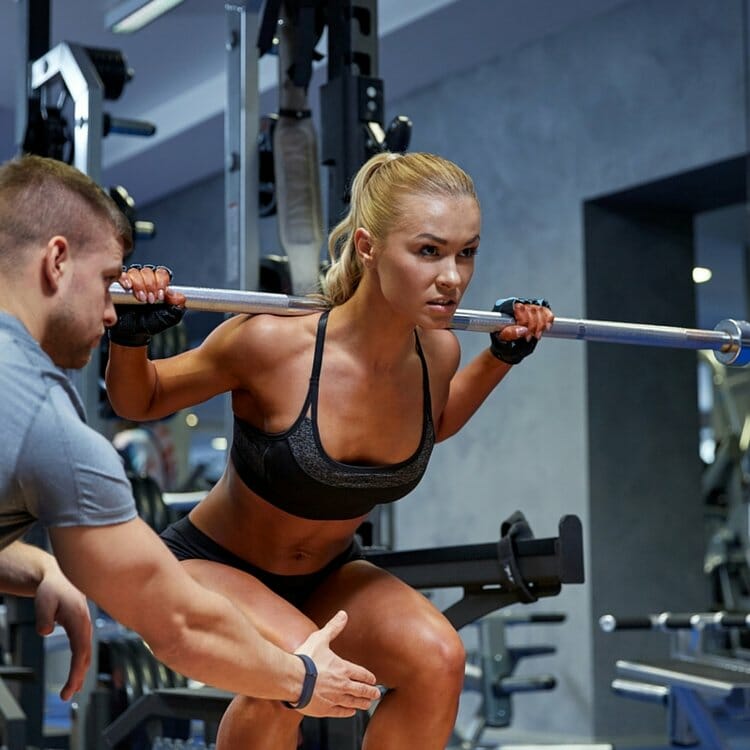Do you want to fashion a butt similar to Kim Kardashian, Jennifer Lopez or Beyonce? Men, does the muscular physique of Hugh Jackman, Zac Efron, or perhaps tight pants wearing tennis ace Rafael Nadal hold greater appeal?
Whatever your preferred look, if adding a little size or shape to your posterior is something you aspire to you’ve come to the right place. Today I’m going to show you how to get a bigger butt in the shortest time possible.
Before I touch on six simple steps to a better butt, let’s delve a little further into the anatomy of your backside.

Three gluteal muscles make up the much admired buttocks. Gluteus medius, gluteus minimus and the larger, more superficial gluteus maximus combine to give a backside it’s firm, athletic or sexy appearance. The trouble is, more often than not these muscles are shielded by a healthy covering of subcutaneous fat.
Related: The 50 Best Exercises For Weight Loss You Should Consider Adding To Your Workout
The gluteal muscles originate from the ilium and sacrum and insert into the femur, or thigh bone. Your glutes are extremely powerful and functional muscles – integral to the extension, abduction, internal and external rotation of the hip joint. Activating the gluteals plays a vital role in standing, sitting, crouching, climbing and a host of other really important movements.
Step 1: Work out if you really want a bigger butt?
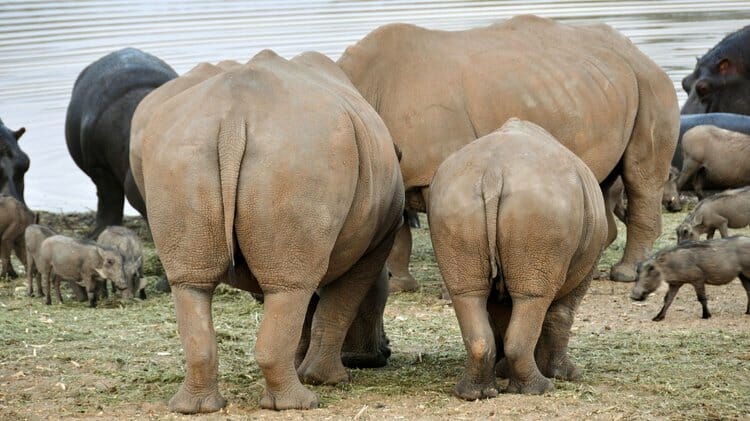
Pining for a booty with identical proportions to the most famous of Kardashian sisters is a common craving. But before you set about achieving such a goal it’s important to step back and work out if this is “what you want, what you really really want.”
Do you wish your bottom was rounder, firmer and larger? Maybe you struggle to hold your jeans up and simply want to fill out your clothes better. If so, you’ll need to focus on muscle hypertrophy, specific training designed to increase the size of your gluteal muscles.
Perhaps, as is the case for many people, you simply desire further definition. If this is the case it may be you simply need to reduce your body fat levels to allow the gluteal muscles greater prominence. Many a great ass is hidden by fat deposits in and around the hip and thigh area.
So which is it? Size or shape? Or both. There are slightly different considerations depending on your specific booty goal.

Whatever your choice, one thing’s for sure, it’s really important you track your progress effectively. What do I mean? If you’re simply looking to lose fat make sure you don’t rely on scale weight. You’ve probably heard the adage muscle weights more than fat. You need to ensure you’re losing fat while maintaining or building muscle mass. Your butt will thank you for it.
A couple of popular ways to monitor body composition are the use of skin callipers or bioelectrical impedance scales. A skin fold assessment is where a qualified technician pinches and measures the skin at several sites to gauge body fat levels.
Bioelectrical scales send electrical impulses through the body and monitor the speed at which they return. Lean muscle has greater connectivity, hence a faster time is correlated with lower body fat levels.
Step 2: Without the right nutrition you’ll never get a sexy butt
Regardless of your butt related goals the number one consideration before embarking on fitness training is to ensure you’re eating the right foods. It’s easy to immediately default to booty inducing exercises to attempt to tone or build your gluteal muscles.
If your nutritional intake is unsatisfactory, either you’re eating unhealthy food options or overdoing the quantity, then regardless of how hard you exercise you’ll have difficulty losing enough body fat to add real definition to your glutes.
Related: Research Says: Diets Don’t Work And Won’t Reduce Fat From Belly
Too many of us carry excess body fat. Have a look at the average U.S. body fat levels by age and gender below.

Essential body fat is approximately 3% for men and 12% for women. Although, I would never suggest reducing body fat anywhere near these low levels unless you are a professional athlete or bodybuilder and it is required for your sport.
To gain more muscle definition you may need to lose fat. The ‘fitness’ range of 14-17% body fat for men, and 21-24% for women is probably a more appropriate target.
To lose fat it goes without saying you need to consume fewer calories than you’re burning on a daily basis. One pound of fat loss each week requires a caloric deficit of 3500 calories. It’s easier reducing 500 calories per day focusing on optimal nutrition than trying to burn that volume solely through exercise.
Check out this calorie burning calculator if you want to know how many calories you’re burning completing a particular exercise.

Slow and steady wins the race…
Don’t try to lose body fat too fast. You should focus on slower more sustainable change of 1-2 pounds per week. Avoid extreme calorie restriction or diets that overwhelmingly favour certain macronutrients. Severe calorie restriction can not only make you tired, lethargic and provide limited energy to fuel your gym workouts – but it can prompt your body to turn to muscle protein as a fuel source. If you are breaking down all important muscle tissue – you’ll struggle to build that shapely posterior.
Instead focus your efforts on optimising your macronutrient ratio. Make sure you ingest a good balance of lean protein, healthy fats and unrefined carbohydrates. Avoid heavily processed foods and too many simple sugars. Try these 7 surprising foods that burn fat like crazy.
Related: How Much Sugar Are You Drinking?

Protein is essential for muscle growth
Protein in particular is essential for building muscle size. If muscle hypertrophy is your aim you may need to bump up your protein intake slightly. Here are a few great sources of protein to include in your diet.
Related: The Importance Of Protein For Weight Loss
Recommendations on protein intake can vary widely. The DRI or dietary reference intake is 0.8 grams of protein per kilogram of bodyweight, or 0.36 grams per pound. This is generally considered a MINIMUM, and many experts believe it is insufficient protein for those engaging in strength training. A higher intake of 1.0-1.7g per kg is perhaps more appropriate.
Drink lots of water
Staying hydrated is also vitally important. A study in the Journal of Strength and Conditioning Research suggests water loss of just 1.5% can significantly compromise muscle strength.
Staying hydrated will help both strength improvements and muscle growth. It’s also central to proper digestion and nutrient absorption – another key cog in the muscle building wheel.
Step 3: Incorporate high intensity cardio into your exercise program
When building a more shapely backside, exercise is second only to nutrition. Let’s look at a few exercises you should add to your program.
High intensity cardio, sometimes referred to as HIIT, is a wonderful inclusion in any butt building program. Not only does high intensity exercise burn fat like crazy, helping reveal your existing gluteal muscles more readily, but incorporating the right type of high intensity exercise will target the glutes specifically. Let’s look at a couple of great options.
Hill Sprints
Try sprinting up hills to accelerate fat burning, build cardiovascular fitness, and really work your gluteal muscles. The size and shape of the glutes on most top class sprinters is no mistake. Compare them to endurance athletes and you’ll see why sprinting is such an effective butt building exercise.
Stair Running
All you need is a set of stairs and you are away! Try this stair workout for size.
And check out a couple of other butt building techniques…
Step 4: Include butt specific weight training exercises in your workout
Before we consider the weight training exercises you should include in your routine, it’s worth noting that, similar to abdominal training, working out your glutes directly will not ‘spot reduce’ the fat from your bottom, hips or thighs. Spot reduction does not work. Fat tends to be lost consistently throughout your body.
Related: Is Weight Training Or Cardio The Best Way To Burn Stomach Fat?
The exercises below are a great addition to your workout regardless of whether losing fat or building muscle is the goal. These exercises all engage significant muscle mass and elicit a strong fat burning response. Not only can they add strength and shape to your posterior, but they will also help with shifting fat deposits.
Squats
Weighted Hip Thrusts
Weighted Butt Bridge or Glute Bridge
Body Weight or Barbell Lunges
Seated Leg press
When designing your program it’s really important to remember a single exercise is not optimal for muscle growth. Look to include a range of different butt exercises to shape and build your bottom effectively.
Step 5: Don’t get comfortable with your butt workout
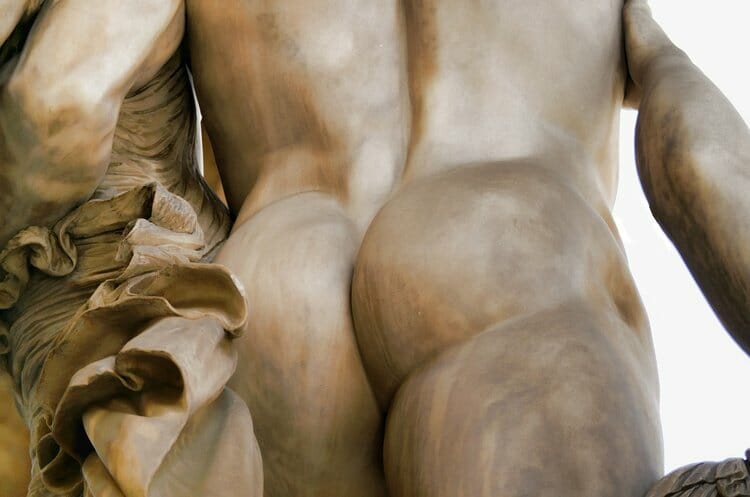
Before we touch on the number of reps, sets, intensity and frequency of your butt training, first I want to first give you a quick download on how muscle hypertrophy works.
When you exercise, your muscle contracts via what is sometimes called the ‘sliding filament theory‘. This is initiated when muscles receive a signal from motor neurons, triggered from your sarcoplasmic reticulum.
As you practice a specific movement you improve your ability to activate motor neurons. The result? The movement becomes simpler, or in the case of weight training you can lift more weight.
When beginning to lift weights this improved motor neuron activation provides an initial rapid strength improvement. Unfortunately it’s not typically associated with significant increases in muscle size.
After the initial strength gain, muscle growth follows – at a steadier rate. Keep in mind, to build muscle, you need to work HARD. You need to stress your muscles significantly in order to encourage growth.
Muscle stress encourages growth
When you stress your muscles through intensive exercise the muscle fibres become damaged, often referred to as microtrauma. Your body will repair this damage by fusing fibres together to replace damaged tissue and add more. The resultant increase in thickness of these fibers creates muscle hypertrophy.
If you often wonder why you feel sore for the next couple of days after a workout, chances are it is due to the localised muscle damage.
Ok, so how many reps should you do. Have a look at the table below.
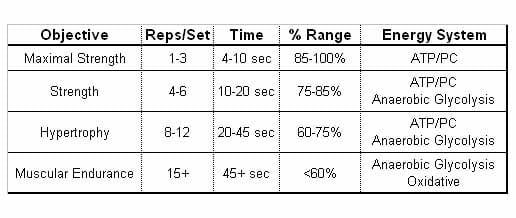
Hypertrophy training typically sits in the 8-12 reps range and training needs to be pretty intense. If you can complete more than 12 reps comfortably – then you need to increase the weight lifted or change the exercise. If you are not working hard and stressing your muscles, then they’re not going to adapt with new muscle growth.
Related: Avoid These 4 Totally Overrated Weight Loss Exercises
Come to think about it – the same applies for weight loss. A harder workout creates a greater calorie burn and a long lasting afterburn effect. The afterburn refers to calories burned post workout completion.
Progressive overload
You need to make your workouts progressively more challenging. Once your strength improves, or the exercise gets easier – increase the resistance to ensure the workout remains challenging.
So long as you don’t have designs on becoming a strength training athlete, 3 days per week of these butt building exercises should be sufficient. Typically you will want to complete 2-3 sets of an exercise during each workout.
Step 6: Plenty of time to rest and recover.
The final step is recovery. When building muscle recovery is critical. No matter how hard you work in the gym… the benefit of that hard work only comes to fruition during the recovery process. This is when the muscle repair actually happens.
If you fail to provide you body with adequate rest or nutrition your muscles can end up in a catabolic state, impacting your ability to achieve muscle hypertrophy. How much recovery do you need? Recovery varies depending on the type of exercise completed, muscles worked, the amount of stress or muscle damage, your age, as well as how hard you have been training in recent times.
Here are a 17 scientifically proven ways to speed up your recovery.
Related: Get More Sleep And Reduce Tummy Fat
Good luck with your butt building efforts! Let us know how you are getting on.
Check out a few other butt workout options below:
